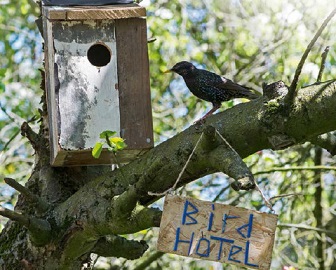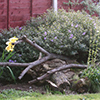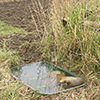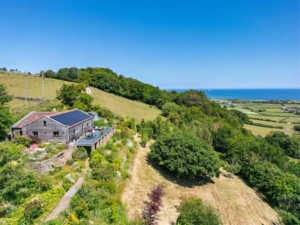Three top tips to help give nature a home in your garden
 Since 25 conservation organisations released the ground-breaking State of Nature report revealing that 60% of wildlife species – including garden favourites like starlings, hedgehogs and butterflies – have declined over recent decades, we felt compelled to lend our support.
Since 25 conservation organisations released the ground-breaking State of Nature report revealing that 60% of wildlife species – including garden favourites like starlings, hedgehogs and butterflies – have declined over recent decades, we felt compelled to lend our support.
We’ve teamed up with the RSPB to give you ideas on how you can help Give Nature a Home in your garden.
Put up a ‘wildlife shelter’ in your garden
A well-planted and cared-for garden offers lots of places for nature to feed, shelter and breed. But to a bird, bat or hedgehog looking for a place to raise its young, an artificial home can be a valuable alternative to a natural shelter. You can buy a variety of wildlife boxes and then put them up at any time of year, or why not get your hands dirty with the family and build your own?!
 Dead wood piles
Dead wood piles
Dead and rotting wood provides a home where fungi, mosses and lichens can grow. As it decays, a pile of wood becomes a bug hotel for a variety of bugs. So whenever you prune, add the cut branches to the pile. If you have a balcony, fill a well-drained bucket with soil and wood chippings to attract bugs. To make it even better, you could add a couple of small rotting branches and put it next to flowers.
 Make a pond (even a mini one)
Make a pond (even a mini one)
Adding a pond to your garden is one of the best ways to give nature a home. Even a small pond could attract dragonflies, frogs, pond-skaters and newts, as well as giving wildlife a place to drink and bathe. It’s best to line a big pond with heavy-duty polythene or butyl rubber. Create shallow edges to allow birds to bathe, hedgehogs to climb out, and frogs to spawn. And create a deep area, at least 45 cm (18 inches) in the middle – this deep area won’t freeze, so wildlife can spend the winter in there safely. If you have a balcony or small garden, you can still help wildlife by making a mini pond. Get a plant tub or washing up bowl, then add gravel or small rocks to the bottom. Pile rocks on one side to help any animals climb in and out. And finally, add in native oxygenating plants, such as hornwort. Although it will freeze easily and will attract fewer bugs than a big pond, a mini pond will still help wildlife.

 We all know there is a housing crisis in the UK. Perhaps less well-known, however, is that there is an equally urgent housing crisis facing much of the UK’s threatened wildlife.
We all know there is a housing crisis in the UK. Perhaps less well-known, however, is that there is an equally urgent housing crisis facing much of the UK’s threatened wildlife.
The worrying state of things for creatures that call our gardens ‘home’ has encouraged Rightmove to lend our support to the RSPB’s new Giving Nature a Home campaign. The objective is simple: to encourage people across the UK to create a million new homes for nature in their gardens and outdoor spaces.


